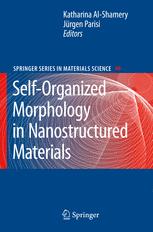

Most ebook files are in PDF format, so you can easily read them using various software such as Foxit Reader or directly on the Google Chrome browser.
Some ebook files are released by publishers in other formats such as .awz, .mobi, .epub, .fb2, etc. You may need to install specific software to read these formats on mobile/PC, such as Calibre.
Please read the tutorial at this link: https://ebookbell.com/faq
We offer FREE conversion to the popular formats you request; however, this may take some time. Therefore, right after payment, please email us, and we will try to provide the service as quickly as possible.
For some exceptional file formats or broken links (if any), please refrain from opening any disputes. Instead, email us first, and we will try to assist within a maximum of 6 hours.
EbookBell Team

4.4
12 reviewsIn this volume, concepts of nonlinear dynamics and self-organization are applied to topics in materials sciences with emphasis on semiconductors, soft matter, and biomaterials. The questions addressed include how to compare ordering phenomena under nonequilibrium situations, usually called self-organized structures, with those arising under situations close to equilibrium via selfassembly. Analogies are pointed out, differences are characterized, and efforts made to discover common features in the mechanistic description of those phenomena. Of major importance is the question of the role of spatial and temporal order, in particular, the application of concepts developed on macroscopic and microscopic scales to structure formation occurring on nanoscales, which occupies the focus of interest on the frontiers of science.